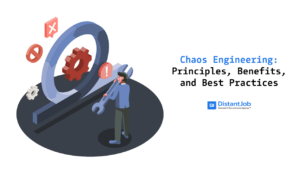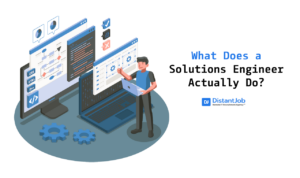Today, there are many software programs that help individuals and businesses with daily tasks. That also means users won’t hesitate to look for alternatives if your software doesn’t meet their expectations.
The principles of software development serve as a guide for developing high-quality, adaptable, reliable software that meets the user’s needs. They help minimize the efforts required to design software systems and reduce the chances of introducing errors during the design process.
In this article, we will explore the latest software development principles and how to implement them. Read on to learn more about how implementing these principles can elevate the quality of your software products.
12 Software Development Principles
Here are twelve principles of software development to guide your team:
1. Agile
Agile has become synonymous with organizations or teams delivering value to customers faster, more efficiently, and more adaptable.
It is one of the most critical principles of software development. Agile software development is a group of principles based on iterative development, where teams collaborate to deliver value in shorter timescales, ensuring flexibility and responsiveness to change.
The Agile methodology splits complex projects into several phases, enabling teams to deliver in manageable increments and continuously improve. Planning, executing, and evaluating each project stage follows a defined process.
However, continuous collaboration with team members and stakeholders is essential. Kanban and Scrum are the two most common Agile methodologies.
With proper implementation, Agile results in better control in the development process, improved software quality, customer satisfaction, improved project predictability, reduced risks, and improved team morale.
2. Architecture-First Approach
Successful software programs typically have solid architectural foundations. The architecture-first approach underscores the importance of designing a robust architecture in the early stages of development. By tackling architectural complexities quickly, developers can reduce uncertainties, improve decision-making, and optimize project productivity.
3. SOLID Software Design Principles
SOLID represents five essential design rules that guide developers in creating maintainable and scalable software applications.
- Single Responsibility Principle (SRP): Each class should have one responsibility, enrobing one aspect of the software’s functionality. The SRP improves design cohesion by helping to avoid responsibility coupling.
- Open/Closed Principle (OCP): Software entities should be open for extension but closed for modification. As a result, developers can add new features without modifying existing code.
- Liskov Substitution Principle (LSP): A subtype should be replaceable for its base type without affecting the program’s correctness.
- Interface Segregation Principle (ISP): Clients shouldn’t have to depend on an interface they don’t use. This principle promotes the creation of small, cohesive interfaces specific to the client’s needs.
- Dependency Inversion Principles (DIP): Models shouldn’t be dependent on low-level models. Both should depend on abstractions. In addition, abstractions shouldn’t rely on details but vice versa.
4. Iterative Life Cycle Process
The iterative life cycle process is a cyclic approach where requirement gathering, design, implementation, and testing are reviewed to improve the software. The iterative life cycle process allows developers to identify and eliminate risks in the early stages.
Continuous iteration through the development cycle ensures the software becomes more adaptable to evolving requirements and changes.
5. Component-based Approach
The component-based approach leverages reused and pre-defined components and functions. This method speeds development, ensures consistency, minimizes errors, and boosts maintainability. As a result, developers can streamline the development process and create efficient, manageable, and upgradeable software.
6. Round Trip Engineering
Round-trip engineering combines code generation and reverse engineering in a dynamic environment. This principle allows developers to work seamlessly on both aspects, leading to accuracy and consistency between code artifacts and design modules.
Automatic artifact updates reduce errors, enhance collaboration, and enhance the efficiency of the entire development process.
7. Change Management System
Software development is an ever-changing environment. A substantial change management system promotes smooth transitions and minimizes disruptions. This principle of software development allows developers to identify, evaluate, and implement changes while maintaining the software’s stability and quality.
8. Model-based Evolution
The model-based evolution principle involves software development using graphical and textual representations to adapt to changing requirements. Models help developers understand the software architecture and behavior by providing a conceptual framework.
It allows developers to evolve the software design and functionality based on real-time feedback, ensuring that the end product is aligned with users’ evolving needs.
9. DevOps
DevOps is a software development methodology emphasizing collaboration between development and operations teams. The main goal is to automate the process to improve efficiency and quality.
At first, it may seem costly because DevOps professionals can be expensive to hire due to high demand. However, the long-term benefits of implementing DevOps practices outweigh the initial costs. The entire DevOps toolchain can be created using open-source tools such as Github Actions, Ducker, ELK Stack, Jenkins, Prometheus, and Ansible.
Implementing DevOps in your development lifecycle is a matter of time and change in your traditional mindset. This methodology also has several benefits, including increased frequency and pace of releases, scalability, and improved collaboration between teams.
10. Clean Code
The main difference between top developers and good developers is the code quality they produce. Quality code is simple, consistent, readable, follow best practices, and is easy to test and maintain. Conversely, maintaining bad code can be challenging and time-consuming. That means you must demand clean code from every developer.
Fortunately, learning how to write clean code is not difficult with commitment. Writing clean code will save the organization time and benefit developers’ professional growth.
11. Objective Quality Control
This software engineering principle entails identifying and following quality metrics, checklists, and improvement measures. Checking and improving quality constantly ensures that your software projects can minimize flaws, improve user satisfaction, and meet established standards.
12. Documentation
Some developers and stakeholders see documentation as unnecessary, but it is crucial to any successful project.
Proper documentation enables you to monitor every phase of the software development process, increasing the quality of a software outcome. If done correctly, documentation makes information accessible, helps new users onboard seamlessly, and reduces support and maintenance costs.
Therefore, document every aspect of the development process—from business requirements to technical specifications to user guides and maintenance instructions. Fortunately, most of this process can be automated using tools like Swagger, Jira Confluence, AsciDoc, and GitHub Wiki.
How to Implement Software Development Principles
Integrating software development principles into your company’s project combines education, adaptation, and specific practices throughout the development lifecycle. Here’s a breakdown of the essential steps:
Educate the Team
Start by familiarizing your team with the core principles of software development. This can be accomplished through workshops, training sessions, or access to relevant resources like articles or online courses. Understanding these principles empowers the team to make informed decisions and collaborate more effectively.
Customize for Projects
Software development principles are not a one-size-fits-all solution, so tailor their application to each project’s specific needs and goals. For example, when working on a large-scale project with a distributed team, adopting Agile methodologies can help improve communication and adaptability.
Evaluate which principle is most significant for the project at hand and how it can be best implemented within the project context.
Implement Through the Development Lifecycle
Here are some principles and practices to consider integrating throughout the development life cycle:
Architecture-First Approach
Establish a solid foundation for your project by prioritizing the design of the software’s architecture before diving into coding. This helps ensure scalability, maintainability, and adherence to the overall project goal.
Netflix’s success is in part due to its solid architecture-first approach. Netflix achieved seamless streaming by building a scalable and modular architecture accommodating millions of users.
Content delivery and user personalization posed challenges. As a result, a resilient system capable of handling spikes in demand was created, setting a new standard for streaming services.
Iterative Development
Make the development process more manageable by breaking it down into smaller cycles. Each cycle involves gathering feedback, refining requirements, and implementing features, allowing for improvement and adaptation to changing needs.
Microsoft employs an iterative life cycle development approach in its Windows operating system releases. Each version of Windows goes through multiple cycles of gathering feedback, refining requirements, and implementing features. As a result, Microsoft can respond to evolving user needs and tackle issues quickly.
Maintaining backward compatibility and managing feature scope were some of the challenges. As a result, a stable, adaptable, and enduring operating system is created.
Version Control and Change Management
Implement a system to track changes made to the codebase, allowing for easy rollback if necessary. This will also facilitate collaboration and communication among team members regarding changes and potential conflicts.
Amazon’s e-commerce marketplace epitomizes effective change management. To enhance user experience, the company constantly deploys updates to its platform and servers.
Some challenges it faced included maintaining service availability during updates and avoiding regressions. The e-commerce giant overcame those challenges and developed a platform that evolves smoothly, ensuring customers can access new features without interruptions.
Quality Control Measures
Measure quality objectively. Develop quality metrics, checklists, and improvement plans to ensure the software meets user expectations.
NASA’s space missions demonstrate objective quality control practices through meticulous adherence to quality metrics, checklists, and testing procedures. Facing the high stakes of space exploration and the imperative for flawless systems, NASA ensures mission success and crew safety. Ultimately, these efforts result in successful missions that advance the frontiers of human exploration.
Implementing Principles of Software Development Ensures Successful Projects
Software development principles are crucial for creating efficient, reliable, scalable solutions. Developers can craft high-quality applications that meet user needs and stand the test of time by diligently applying these principles.
Organizations/teams that follow these guidelines are productive and innovative, leading to better project outcomes and satisfied stakeholders.
Looking to hire software developers who understand the principles of software development? DistantJob can help. We are a remote recruitment agency that specializes in finding the best talent globally. Our experienced team knows how to vet candidates thoroughly to ensure you get top-quality professionals for your team.
Contact us and start building a team that will elevate your projects.
FAQ
Software development principles are guidelines that help developers create high-quality software. These principles encompass various software development life cycles, including design, coding, testing, and project management.
Adhering to these guidelines is essential for producing well-structured, error-free software that meets user requirements and industry standards.
The key principles of software development include KISS (Keep it Short, Stupid), DRY (Don’t Repeat Yourself), Modularity, Agile methodology, Change Management, and DevOps.
Three principles that play an important role in software development are Modular design, which involves breaking down software into smaller, independent modules; Iterative development, which focuses on breaking down the development process into smaller, manageable cycles; and testing and quality assurance means integrating testing throughout the development process.




